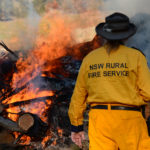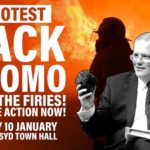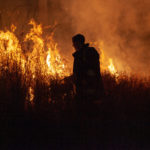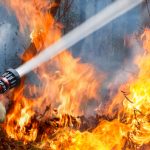“Exacerbated by Global Heating”: An Interview With NSW Firefighter Jim Casey
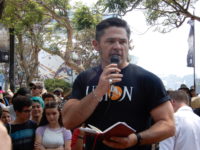
The current bushfire crisis has so far destroyed over 10 million hectares. Unprecedented in its scope, it’s also taken the lives of 32 people – including 12 firefighters – while over a billion animals have perished in the flames. And the true environmental, economic and health costs remain unknown.
So, it comes as a bit of a shock for many to learn that 23 former fire and emergency leaders had been trying to warn the federal government about the crisis that was likely coming and the need for greater investment in protective measures as far back as April last year.
In order to combat any finger pointing that might come their way, politicians of the right have been propagating the idea that the Greens are to blame for the unprecedented bushfires, due to their supposed opposition to hazard reduction burns. Although, there’s no evidence to justify this.
NSW deputy premier John Barilaro came out just last week accusing NSW National Parks and Wildlife Service of not performing necessary hazard reduction due to “ideological” reasons, even though his government in 2017 cut $121 million of its funding, which resulted in reduced fire prevention staff.
Governed by the culprits
This nation is “ground zero for both climate impacts and climate policy uncertainty”, states an open letter published on Wednesday by Australian Research Council fellows. The 80 leading local academics state that government needs to learn from the catastrophe and take relevant action.
These bushfires “arrived at the end of a year with the lowest average rainfall and the highest average temperatures ever recorded across Australia”, the academics outline. “Climate change has arrived, and without significant action greater impacts on Australia are inevitable.”
However, it’s becoming increasingly apparent that the Liberal National government isn’t willing to take effective measures. Morrison has admitted to climate playing a role in the increased intensity of the fires. Although, he’s only spoken of adaptation to it, rather than action to cut carbon emissions.
A major reason behind this unwillingness to act is that the federal government is in the pocket of the coal industry. Indeed, numerous links between government and Big Coal would make it financially counterproductive for Coalition politicians to walk away from the industry.
And this is further evidenced at the state level with the NSW Liberal National government’s bill before parliament, which seeks to remove the requirement that planning authorities now have to consider the impact of exported coal emissions when assessing new mining proposals.
Word on the ground
The Australian Firefighters Climate Alliance is a group of firefighters who’ve joined together to advocate for stronger action on climate. And career firefighter Jim Casey has been speaking out on its behalf at a number of Sydney rallies over recent months.
Sydney Criminal Lawyers spoke to Fire and Rescue NSW firefighter Jim Casey about the factors that created the most intense bushfires ever seen, how the government would have reacted in a similar manner regardless of who was PM, and the reasons behind those hazard reduction rumours.
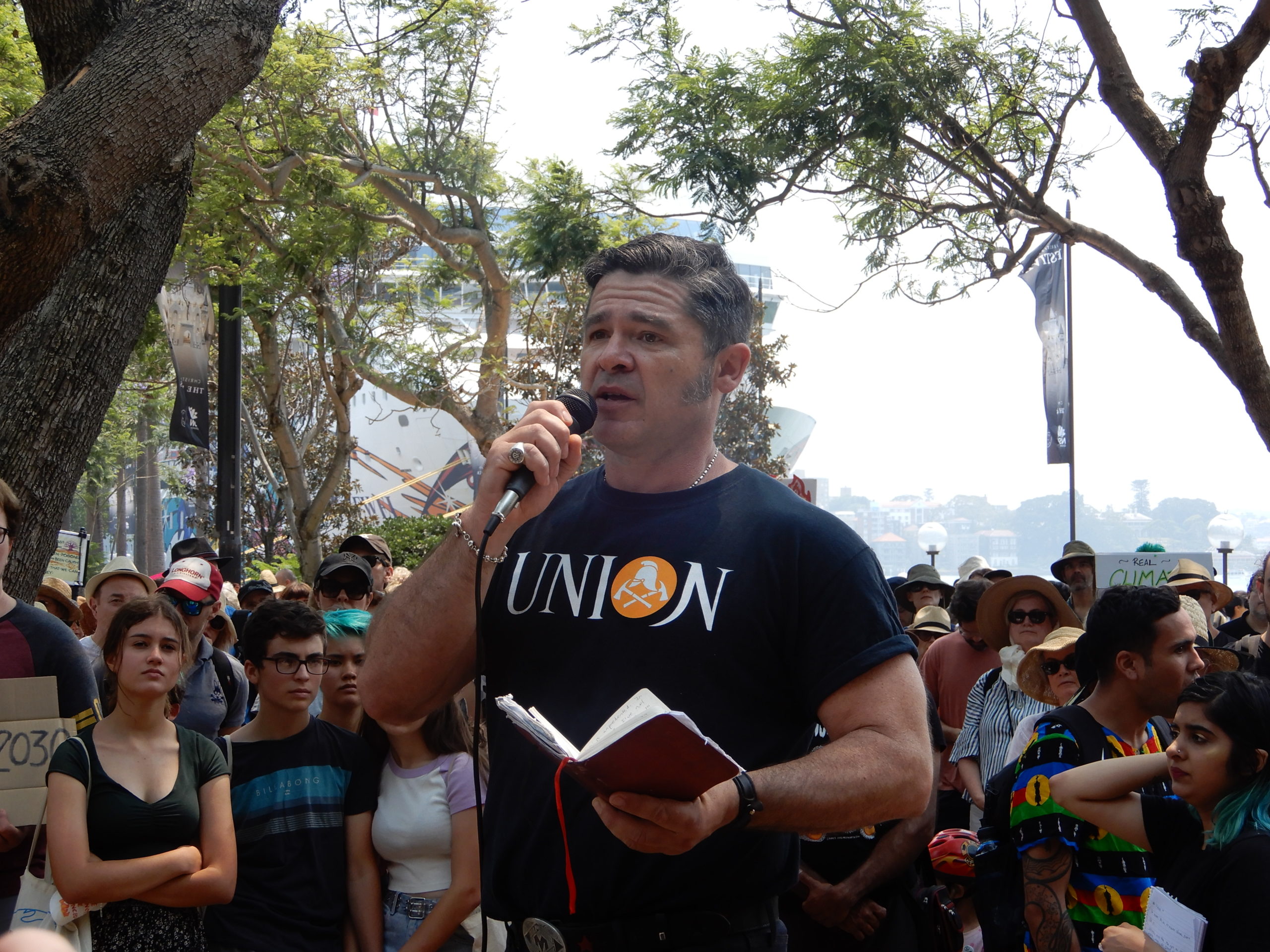
Firstly, you wrote in the Guardian a few months back, that you’ve been fighting fires your entire professional life and you’d never before seen the types you were being confronted with.
But, that was in mid-November, and there’s been much more to come. Jim, how would you sum up what’s happened since then?
I take no satisfaction in saying that when I said in November that these fires were unprecedented, I was correct then, but the worsening situation just shows you how much more extreme this season has become.
That extremity is not by chance, it’s a changing world. And it’s led to a catastrophic fire season.
So, you’ve been out there on the frontline during the crisis. In your opinion, are we passed the worst of it?
I’m not prepared to say that we’re past the worst of it, because you just don’t know what’s going to happen.
It is worth noting that a lot of the fuel load near major population centres has been significantly reduced just by fire. And we’ve had a limited return of rain.
But, having said that, we’ve still got months of summer to go – anything could happen. So, I’m hoping the worst is over, but I wouldn’t make that commitment.
And what’s it been like out there for you fighting the fires?
It’s been fighting bushfires or carrying a larger load in the city. We’ve had less resources in the city, because people are at the frontline, so it’s busy all around.
It’s either busy in Sydney, up in the Blue Mountains, or down on the South Coast. To be honest, it’s been full on. But, that’s the nature of the job.
You’re a spokesperson for the Australian Firefighters’ Climate Alliance. You accept the science linking the severity of the crisis to changing climate conditions.
For those in the community coming to grips with the effects of changing climate on bushfires, how do you explain the implications?
For a fire to occur you need three things: temperature, oxygen and fuel. So, for a wildfire – a bushfire – you’ll see more intense fires, when you’ve got more fuel on the ground, where the atmosphere is windy and when the temperatures are high.
For these fires, all three of those factors have been exacerbated by a change in climate. We’ve seen extreme weather behaviour in terms of windstorms, and so forth, which is associated with a warming world.
We’ve got a fuel load on the ground that’s higher than anyone wanted. That’s partially because of the reduced window for hazard burns during winter, which is the result of a warming world.
Then finally there’s the question of temperature. The 1 to 1.5 degree of warming is an issue. But, by far, the bigger concern is the extreme weather spots, which occur within that warming.
So, the runs of very hot days in the high 30s or low 40s. That’s the kind of thing that turns the bushfire into a firestorm.
All three of the factors behind what makes a fire work – all three – have been exacerbated by global heating.
You’ve been addressing the crowd at a number of recent rallies in Sydney, which have been calling out Scott Morrison on his lack of climate action.
How would you describe the leader of this country’s form during the current crisis, which is now into its fifth month?
My favourite take on it is from the Betoota Advocate, which is the Nation Begins To Understand Why Scotty Got the Arse From All Those Marketing Jobs.
But, seriously, it’s been a conspicuous fail. The prime minister has got a cloth ear. His attempts at empathy come across as either harassing people into shaking his hand or running away from them when they need something. It’s a disgrace. It’s been a fail.
But, while Scott Morrison’s personal failings have been made manifest, the real issue is he represents a political party that’s beholden to the mining lobby. And none of the people who would be prime minister instead would be behaving any better.
Morrison is someone easy to mock for the way that he’s been handling the situation from beginning to end. And he should be mocked. He deserves the contempt.
But, no one should be under any allusions that the next in line for the top job in the Liberal Party would be any better than he would.
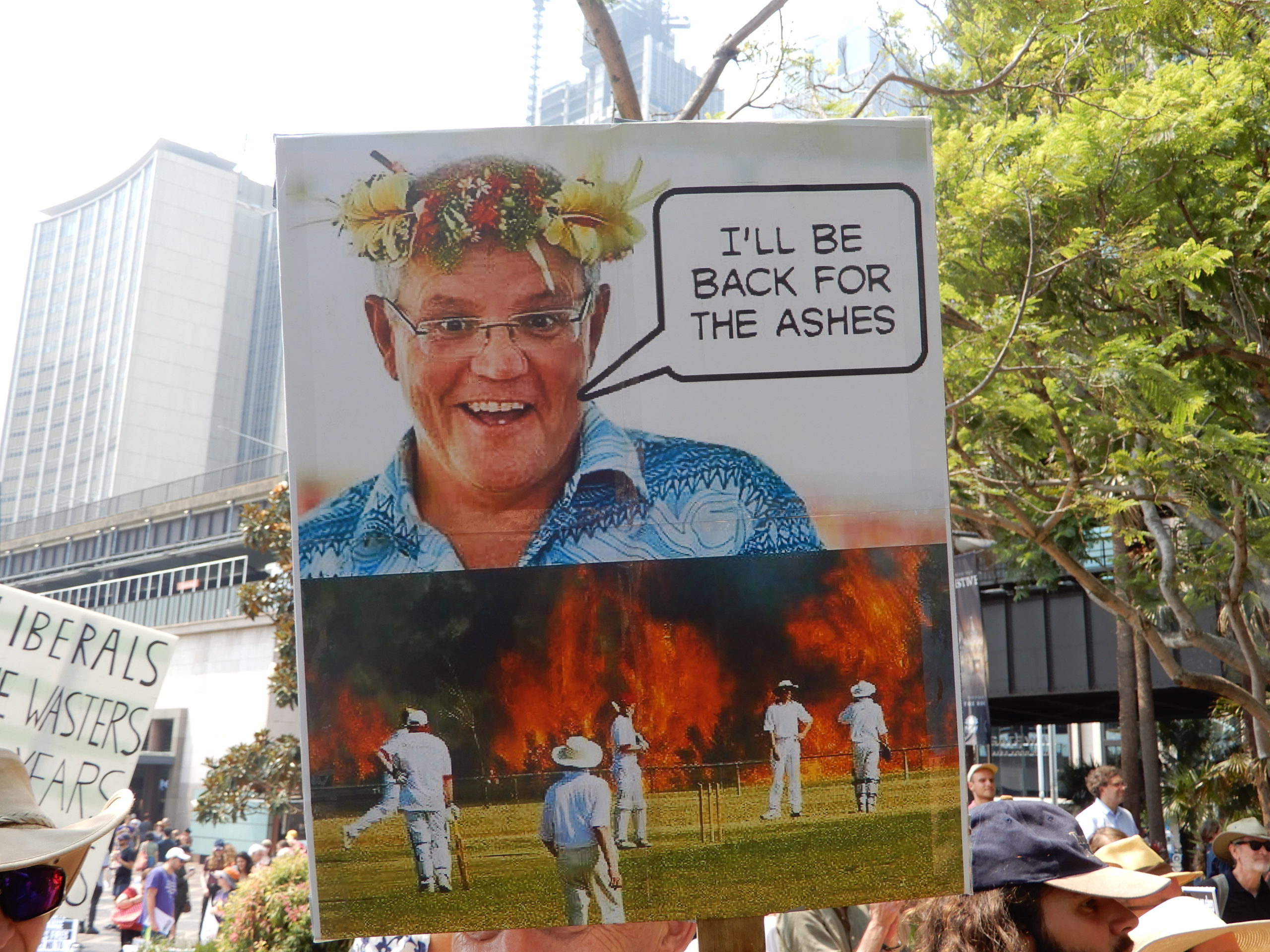
The right of politics has managed to run a smear campaign, laying the blame for the current crisis at the feet of the Greens, because of its supposed position on hazard reduction burns.
You’re a member of the NSW Greens, so you must have been confronted by this argument. How have you been able to account for it being bandied about like its truth?
There are some people that it wouldn’t matter what you say they’re going to believe the madness.
The thing I’ve found – which is quite compelling – is that I’m a proud member of the Greens NSW, and I conduct hazard reduction burns. It’s part of my job. And I don’t down tools when I am told to do it.
It’s just ridiculous. The Greens are not opposed to hazard reduction burns. We are opposed to the idea of concreting the entire countryside and destroying everything. But, most Australians are.
The Greens are a scapegoat for a tricky and nasty government that’s been called out. So, they’re trying to find someone to blame. They’ve had a crack at us. Most don’t believe it, particularly when you see the fire chiefs coming out saying that it’s not true.
To put this all in context, the Greens have a minority on some councils. We have two lower house MPs in NSW. We’ve got one lower house MP in federal parliament. How we are running this agenda with those numbers is beyond me.
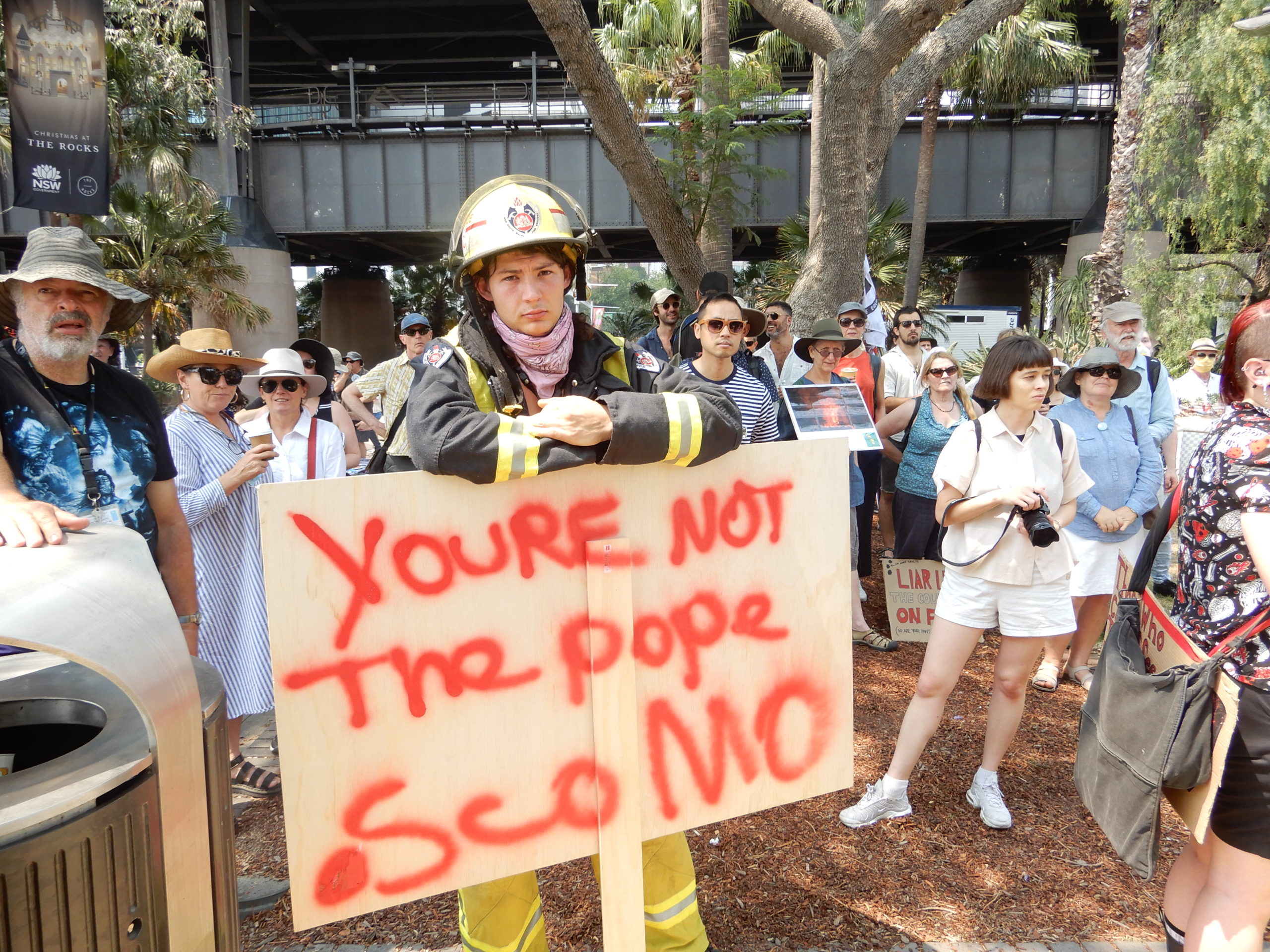
The minister in charge of this state’s bushfire recovery, NSW deputy premier John Barilaro just took aim at NSW National Parks and Wildlife, blaming that organisation for the intensity of the fires because again it hasn’t been properly partaking in hazard reduction.
What do you think about the leader of the NSW Nationals accusing National Parks of being at fault?
That bloke has got more front than Myers to have a crack at National Parks, when under this government, according to the Public Service Association, there’s been a 35 percent cut in firefighting positions inside the parks.
Again, it’s just switch and bait. These people have been caught out not planning for the future. They’ve been caught out cutting funds from parts of the public sector that fight fires.
They’ve been caught out running no line at all on climate change. And basically, subsidising the fossil fuel industry.
They know that anyone with half a brain is putting all of this together and coming up with the conclusion that they’re vandals. And their concerns for their top end of town mates outweighs any concerns for the environment or the rest of us.
So, in an environment like that, they’re looking for someone to blame. And I just urge your readers to take everything they say with a grain of salt, because these people have got blood on their hands, and they’re desperately trying to make sure that no one – no one – blames them.
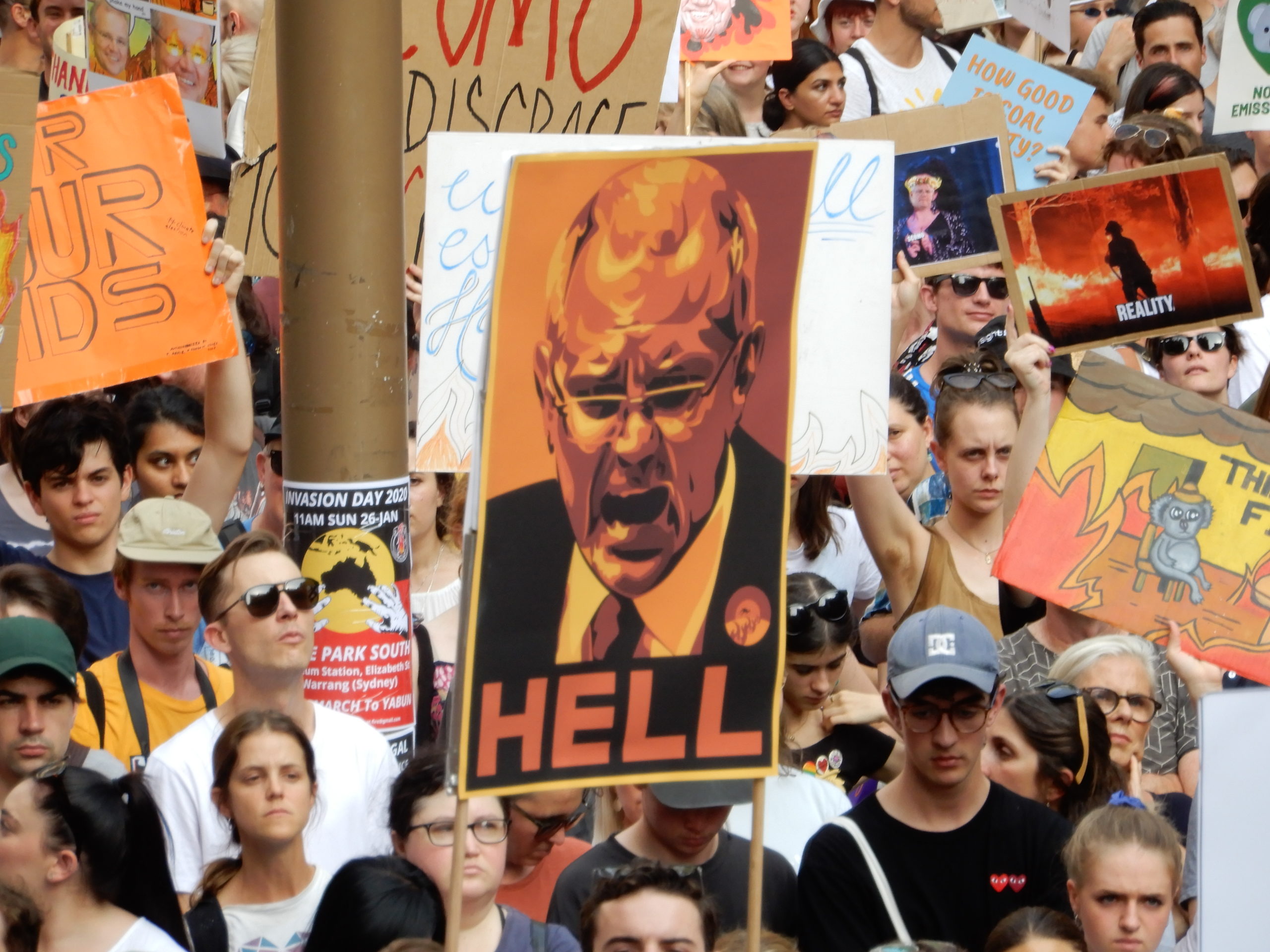
And lastly, Jim, as a career firefighter with a grounding in the science of climate, what do you think needs to happen from here, both in terms of immediately on the ground and also at a broader level looking at climate into the future?
There are two things that need to happen. The first is the immediate question of how we respond to these crises when they’re upon us. Obviously, they’re needs to be more money put into firefighting. You can’t get around that.
At the end of the day, firefighting hasn’t changed for centuries. There’s someone on the end of a length of hose or a hand tool doing their best to put the fire out or build a fire break. That’s not going to change. We need more firefighters on the ground.
But, then there are other things we need as well. There needs to be significant investment in aerial capacity and fleets.
While these fires were at their worst, there were hundreds of professional firefighters, like me, who could not be used. I had days off, because there weren’t enough fire engines for us as staff. You could fix a lot of this with a $50 to $80 million expenditure.
I actually expect that we will see some of that from government. This crisis has frightened everyone and throwing limited amounts of money at this is something they will do. Probably not enough. And we will need to push for more. But, they’ll have a start.
The big issue is what they’re doing about the root cause of the problem. And that’s a far more thorny kind of question.
This is what we are seeing at 1 degree of global heating. If things were fixed right now, we are still likely to get up to the 2 degree mark. And there’s no indication that that’s going to happen.
So, really this is just a taste of the future. Things will get worse, unless action is taken immediately.
That means that both the state, and especially the federal government, need to accept the science and get aggressive about trying to make sure that Australia stops burning coal for our own energy consumption, exporting fossil fuels for others, and start making our nation a leader in the world for renewable energy, both for our consumption and export.


